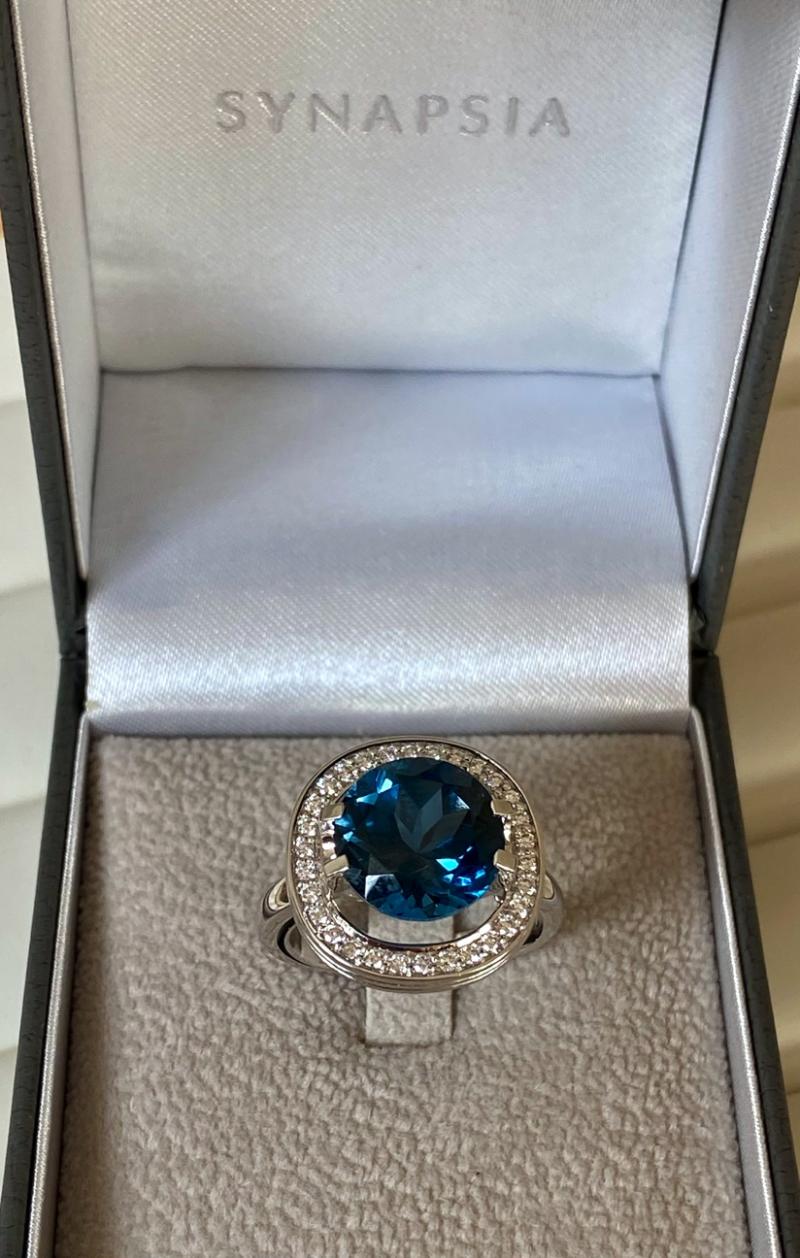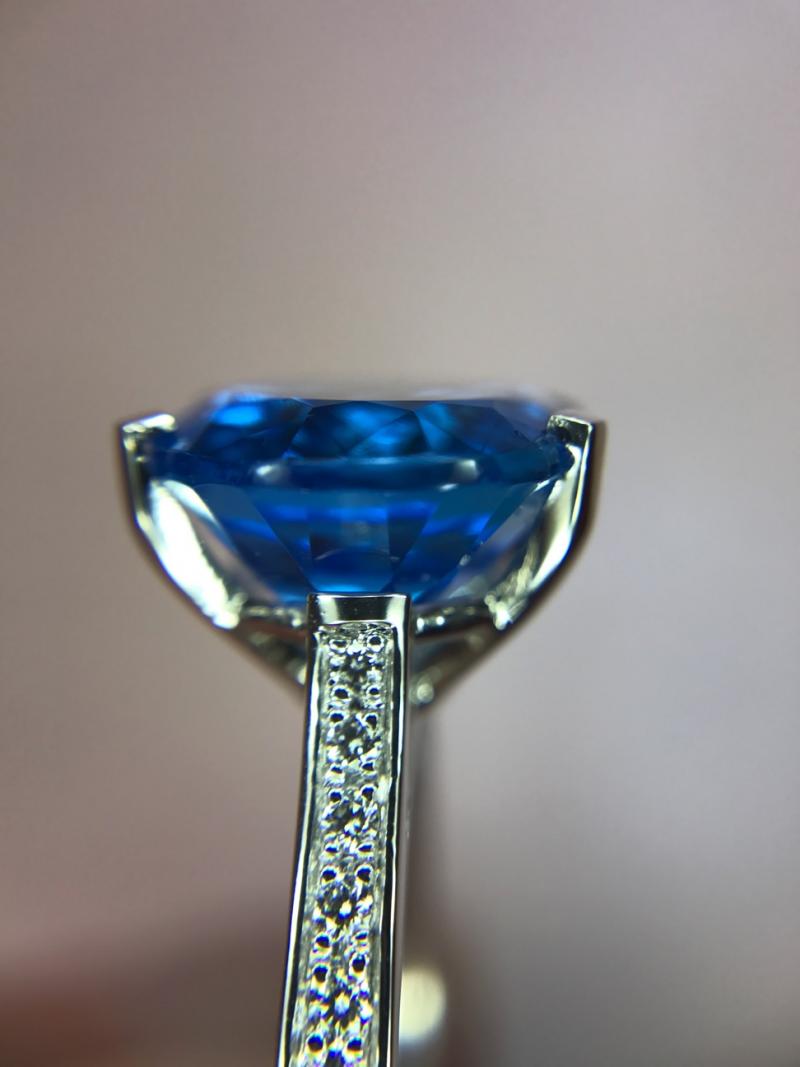Description
Pure Topaz is transparent; it is the impurities in its structure that give it its colour. It is a pleochroic stone, meaning that it changes colour depending on the angle from which it is viewed. It comes in a wide range of colours: white, yellow, orange, red, pink, blue, green, violet, and very often several colours in the same stone.
There are different varieties of Topaz, especially blue Topaz. One of the best known is London blue Topaz, a stone that is widely used in the world of jewellery. As this type of Topaz is very rare to find in its natural state, white Topaz is treated with radiation to become 'London blue Topaz'.Il existe différentes variétés de topaze, et plus particulièrement de topaze bleue. L'une des plus connues est la topaze bleue de Londres ou ‘London Topaze’, une pierre assez usitée dans le monde de la joaillerie. Ce type de topaze étant très rare à trouver à l'état naturel, la topaze blanche est soumise à un traitement par radiation pour devenir ‘topaze bleue de Londres’.
Significance and history
Topaz is found in many countries, including Russia, Afghanistan, Sri Lanka, the Czech Republic, Germany, Norway, Pakistan, Italy, Sweden, Japan, Brazil, Mexico, Australia, Nigeria, the United States, Zimbabwe and even Cambodia. Brazil is the world's largest producer of Topaz.
Where can I find it? Origin
Topaz stone is an aluminium silicate containing fluorine and may contain traces of other metals. The result is a mineral with a hardness of 8 on the Mohs scale.
Despite its hardness, it is important to take care of your Topaz because of its crystalline structure. Topaz tends to break along one of its cleavage planes when it receives a blow. In this case, the risk is not of damaging the stone but of breaking it completely.
To clean Topaz, you can use an old toothbrush with soap and lukewarm water. Avoid using ultrasound, which could damage the stone.
Hardness & Care
Topaz stone is an aluminium silicate containing fluorine and may contain traces of other metals. The result is a mineral with a hardness of 8 on the Mohs scale.
Despite its hardness, it is important to take care of your Topaz because of its crystalline structure. Topaz tends to break along one of its cleavage planes when it receives a blow. In this case, the risk is not of damaging the stone but of breaking it completely.
To clean Topaz, you can use an old toothbrush with soap and lukewarm water. Avoid using ultrasound, which could damage the stone.
Virtues
Topaz is considered a stone of confidence and protection, helping to eliminate negativity and nervous tension.
The Egyptians believed that Topaz got its colours from the golden glow of the Sun God, the mighty Ra, and the Romans associated it with Jupiter, also the Sun God. In ancient Greece, Topaz was thought to have the power to increase strength and make its owner invisible.
The ideal metal to go with your Topaz
White metals such as white gold or platinum enhance Topaz and maximise its brilliance.

